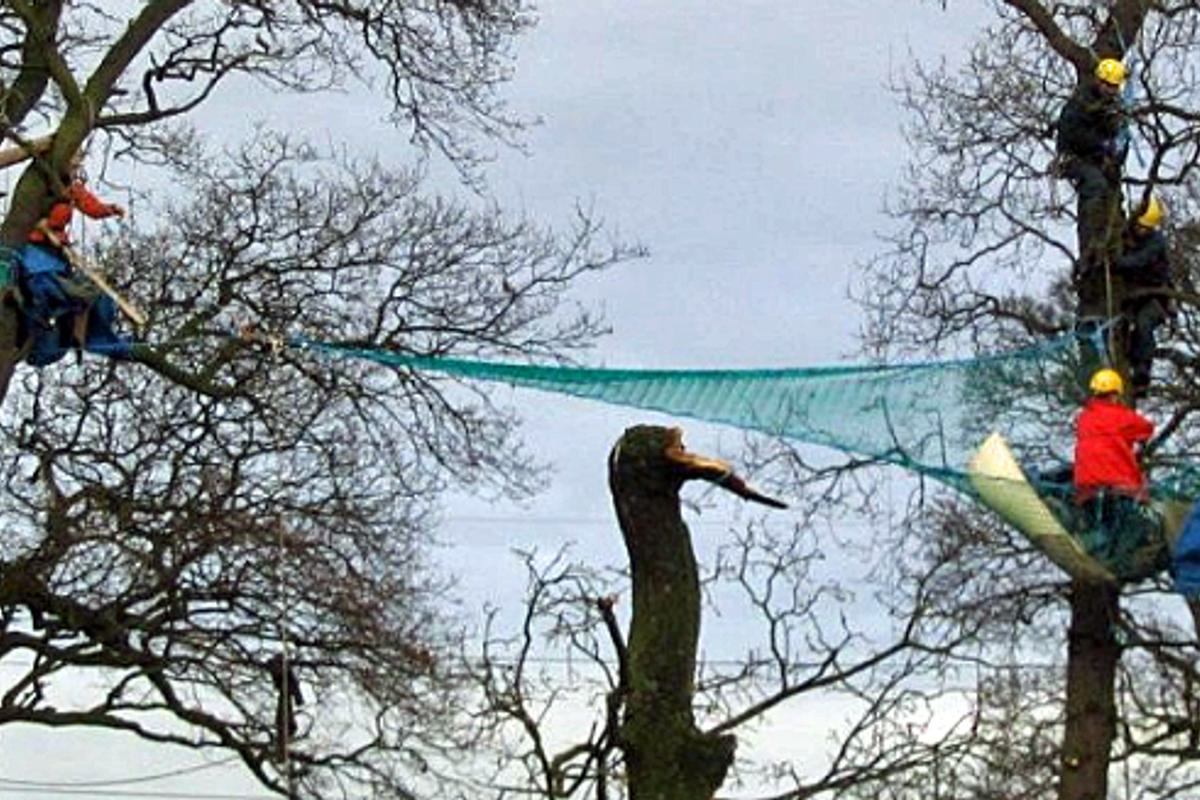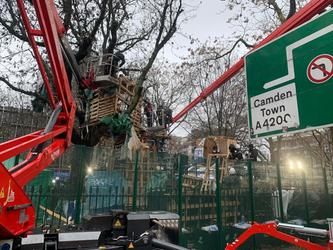Evictions - why it is so important to have the right insurance

A group of people who are actively protesting or demonstrating for a cause frequently decide to take quite radical measures to prevent their removal.
This may include: a variety of lock-ons; protests at height on all manner of ramshackle structures, trees and roof tops; or tunnelling and booby traps underground.
The common factor in all this is resistance to eviction – they want to make it as hard and dangerous as possible for the eviction team to remove them.
This makes the choice of insurance cover absolutely vital – search and rescue cover simply does not cut the mustard.
Not only is rescue insurance woefully inadequate, it also puts everyone, including the client, at risk.
The need for the right insurance cover
Rescue cover implies that the person actually wants to be rescued – a climber injured on a mountain in a blizzard or a group of teenage boys stranded in a deep cave really want you to get them out of there as quickly as possible and will do all they can to help!
But a protester actively resisting is a quite different scenario and this greatly increases the risks of injury to both the protester and the enforcement agent.
Using specialist trained and experienced enforcement agents with all the appropriate equipment will mitigate this risk, but the right insurance is still needed so that, in the case of a claim for injury, damage or even death, this will be covered.
I just want to point out at this stage that The National Eviction Team has a 100% safety record. We have all the appropriate insurance in place, despite never having had to make a claim!
The risks of inadequate cover
So, what could go wrong? If a protester had a claim, the insurance may not cover the cost of the claim if the insurance was inadequate. That might also mean that your legal expenses of defending the claim were also not covered. Insurance companies can be quite skilful at finding reasons not to pay out!
More seriously though, if a protester was seriously injured or even killed, there may be heavy sanctions both for the organisation and directors of both the High Court Enforcement Officer (HCEO) and the instructing client.
The Corporate Manslaughter and Corporate Homicide Act 2007 states that “an offence will be committed where failings by an organisation’s senior management are a substantial element in any gross breach of duty of care owed to the organisation’s employees or members of the public, which results in death.”
Sanctions include fines, imprisonment and disqualification for the directors.
Whose responsibility is insurance?
Of course, the HCEO that you instruct will be responsible for ensuring that they have appropriate insurance in place.
But the senior management of the client instructing the HCEO will also be required to check that the HCEO is a suitable provider to undertake this work, which will encompass skills, qualifications, training, equipment, experience and insurance.
This will form part of your duty of care to members of the public, the protesters, and protect your business and your reputation.



